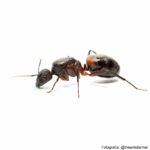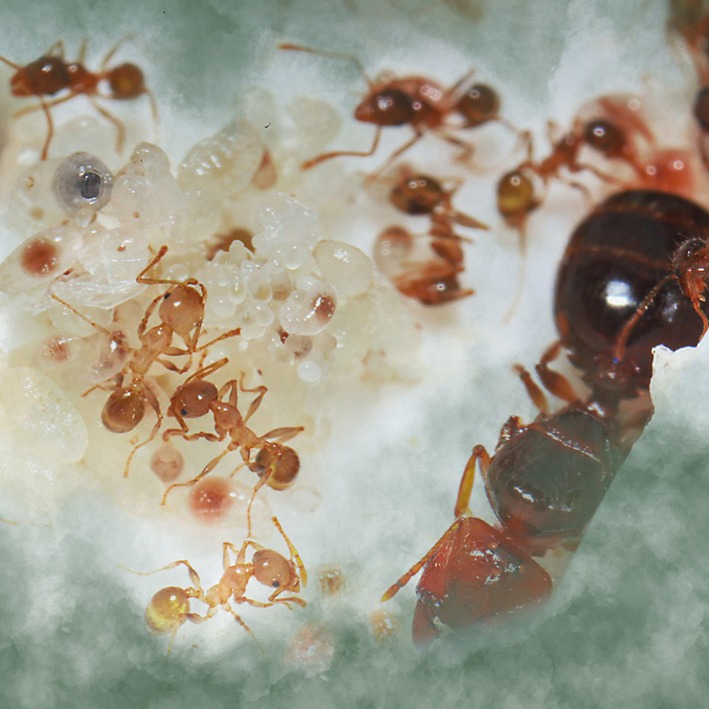

Pheidole pallidula
3,00€ – 6,00€Price range: 3,00€ through 6,00€
Discover the power of the Pheidole pallidula ant: small but powerful, it works tirelessly to achieve great goals. Make it part of your nest today! 🐜💪
*Queen ant
Scientific Name: Pheidole pallidula
Class: Insecta
Order: Hymenoptera
Family: Formicidae
Genus: Pheidole
Species: pallidula
Morphological Characteristics:
Size: The workers are approximately 2-4 mm in size, while the queens can reach up to 7 mm.
Color: The workers are dark brown to black, with a lighter abdomen, whereas the queens may have lighter shades.
Body: It has a large head in proportion to its body, with a well-differentiated thorax and abdomen.
Antennae: The number of segments in the antennae varies depending on the caste type, but generally, they have 12 segments.
Eyes: It has relatively large compound eyes.
Life Cycle:
- The colony is composed of one or several queens, workers, and larvae.
- The queen is the only fertile female in the colony and is responsible for laying eggs.
- The larvae go through different stages before becoming adult workers.
- The workers are responsible for foraging, taking care of the larvae, and defending the colony.
Habitat and Distribution:
- The ant Pheidole pallidula is native to Mediterranean regions and is commonly found in Europe.
- It prefers warm and dry habitats such as agricultural fields, gardens, forests, and urban areas.
- It can build its nests underground, in rotten logs, or in decomposing plant matter.
Behavior:
- It is an omnivorous species, feeding on a variety of sources including insects, nectar, seeds, and decomposing organic matter.
- All ants we offer undergo a quarantine period to ensure they are in good condition, which is why we offer a guarantee when you decide to acquire one of the species we offer at Antderground.
| Options |
Queen ,Queen with 1-15 workers |
|---|
Related products
Camponotus pseudolendus
Sold out
Camponotus lasiselene
Sold out
Camponotus vagus
Sold out
Camponotus Mutilarius (Xiangban)
Sold out
Camponotus vanispinus
Sold out
Camponotus fedtschenkoi
Sold out
Camponotus japonicus
Sold out
Camponotus parius
Sold out





























